Cashu: What It Is And How It Works
Discover the revolutionary Cashu protocol - a seamless blend of Lightning Network and Chaumian e-cash principles, offering unparalleled privacy and speed in digital transactions.
What Is Cashu?
Cashu, an open source protocol deeply intertwined with the Lightning Network, is designed to revolutionize peer-to-peer transactions by offering near-perfect privacy, both online and offline. Rooted in the concept of Chaumian e-cash, Cashu provides a decentralized and trust-minimized alternative to traditional payment systems.
Invented by a developer named Calle, and named after the renowned cryptographer David Chaum, Cashu draws inspiration from his pioneering work in electronic cash systems, notably his creation "Digicash." This protocol aims to enhance user security and privacy by leveraging cryptographic techniques. Let's delve deeper into how Cashu operates.
In the realm of Bitcoin, Cashu stands out as one of the implementations of Chaumian e-cash, alongside projects like Fedimint. While Fedimint employs on-chain and multi-signature approaches, Cashu operates exclusively through the Lightning Network.
Cashu relies on mints, which are effectively Lightning nodes, to issue tokens representing Bitcoin holdings. These tokens enable anonymous transactions within the mint's network. The beauty of Cashu lies in its blinding mechanism, ensuring that even the mint operator remains unaware of token ownership and transaction details.
Cashu wallets uses the mint's Lightning node to send and receive Bitcoin payments anonymously in exchange for ecash. This integration enables Cashu wallets to function as standard Bitcoin Lightning wallets, offering the added advantage of near-perfect privacy, just like cash in real life.
Users within the same mint can transact seamlessly and privately, with transactions being instant and fee-less, courtesy of the Lightning Network's efficiency. Furthermore, Cashu facilitates inter-mint transactions, allowing users to transfer funds across different mints effortlessly.
One of Cashu's key advantages is its preservation of privacy even during withdrawals from the mint. By leveraging the anonymity within the mint's network, users can fund, transact, and withdraw without revealing their identity or transaction history.
However, the trade-off for such privacy-enhancing features is custodial control. Users must entrust their funds to the mint operator, necessitating a degree of trust in the integrity and security of the mint. While this introduces a potential risk, users can mitigate it by either selecting reputable mints or limiting the amount of funds entrusted to them.
In essence, Cashu offers a tantalizing proposition: unparalleled privacy and efficiency in digital transactions. While the custodial aspect requires careful consideration, Cashu's innovative approach to Chaumian e-cash opens doors to new possibilities in the realm of decentralized finance.
How Cashu Works

At its core, Cashu functions as a Bitcoin Layer 2 payment system, operating alongside Bitcoin's Layer 1 and the Lightning Network. It facilitates lightning-fast, scalable, and fully private transactions backed by Bitcoin reserves. The protocol establishes a mint, responsible for issuing e-cash tokens on the Lightning Network. These tokens use blinded signatures, ensuring anonymity and security during minting, spending, receiving, and redemption processes.
Users can seamlessly redeem Cashu tokens into Lightning Network or even fiat currency, thanks to its interoperability with various layers and systems. Notably, Cashu operates on a custodial basis, where the mint securely holds users' balances. However, crucially, the mint remains oblivious to individual account balances and payment details, preserving user privacy.
Cashu removes the need for traditional accounts or personal information, offering unparalleled privacy. Users retain control over their tokens, with the option to store or transfer them freely. The protocol empowers individuals to start their own mints, essentially acting as independent banks capable of issuing e-cash. Moreover, users have the liberty to select their preferred mint, providing flexibility and autonomy in managing their digital assets.
Cashu is built upon a variant of Chaumian blinding, developed by David Wagner, a student of David Chaum. This adaptation aims to maintain security and privacy standards while circumventing specific patents associated with Chaum's Digicash.
Rooted in Chaumian blinding principles and incorporating a Blind Diffie-Hellman Key Exchange scheme, Cashu stands as a testament to privacy-focused innovation in the cryptocurrency landscape. While similar projects like Fedimint share analogous objectives, Cashu distinguishes itself by offering a decentralized model devoid of federated mints. This decentralized approach enables users to choose from a variety of mints based on cost, reputation, convenience, or other incentives, further enhancing the protocol's accessibility and user-centric design.
Practical Example Of How Cashu Works

Now, I'll outline the process of receiving some sats, minting them, transferring the Chaumian eCash, and finally moving it back to a Lightning wallet.
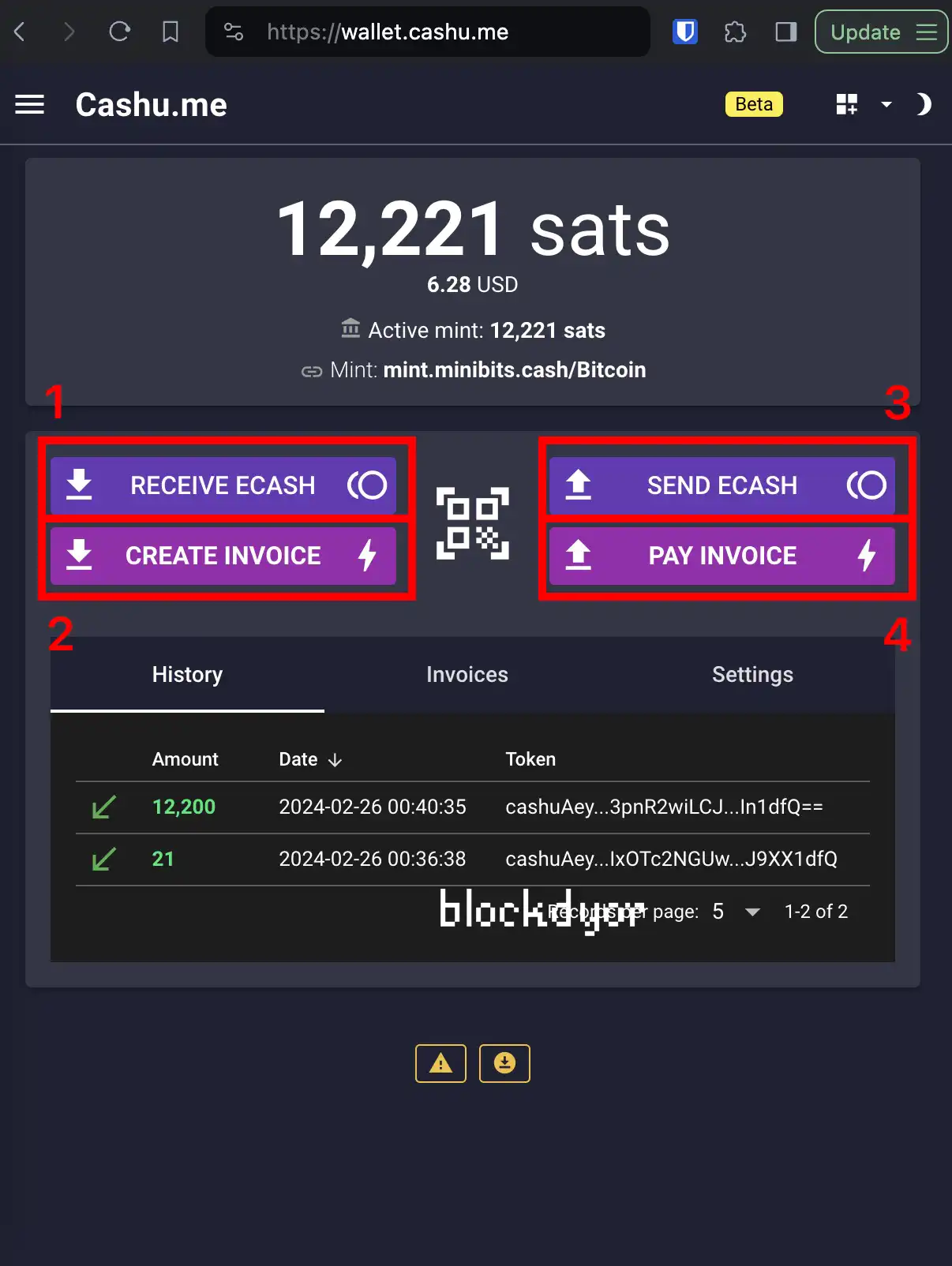
I'm using the "official" Cashu wallet, accessible via any web browser on your laptop or phone at Cashu.me. Simply click on "wallet" to access it. Registration or KYC verification is not required, offering full anonymity and privacy. Here are the primary functions available:
- Receive ecash: Easily receive ecash directly from other users within your mint or even from users in other mints.
- Create invoice: Generate invoices to receive Bitcoin Lightning payments from a Lightning wallet.
- Send ecash: Seamlessly send ecash to other individuals within your mint or to users in different mints.
- Pay invoice: Utilize ecash to pay invoices, converting it into Bitcoin for transactions with other Bitcoin Lightning wallets.
As you can see from the screenshot, I already sent some sats to the mint.
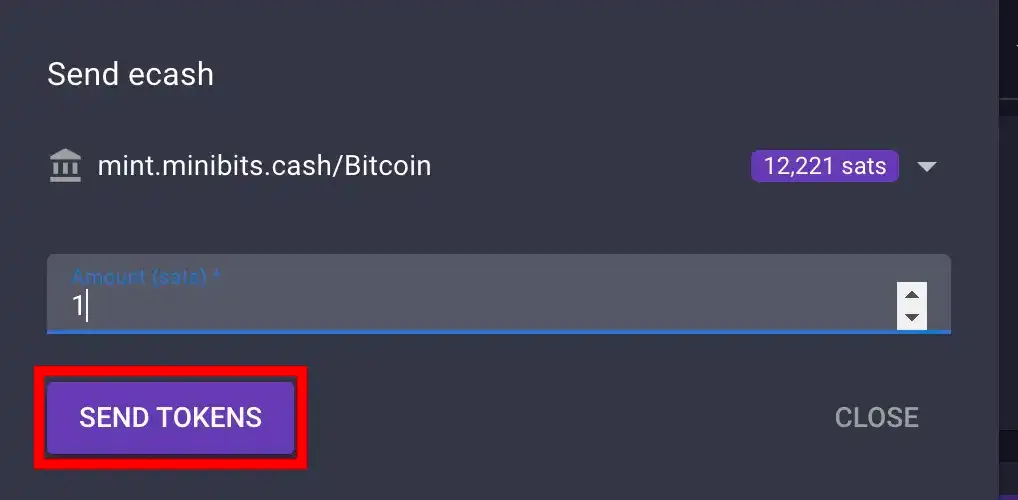
To send ecash to others, simply click on "SEND ECASH" on the Cashu wallet homepage, choose the amount of sats to send (1 satoshi = 1 ecash), and then click on "SEND TOKENS."

Upon starting the process, a token will be created, comprising a QR Code paired with an alphanumeric code. This token serves as a means to transfer your ecash to any desired recipient. Simply click on "copy token" and transmit it via text message. The recipient can be anyone, including yourself.

Until someone receives the token, it will appear as "unspent" in your Cashu wallet.

If you want to receive ecash in the wallet, you just have to click from the Cashu wallet the Receive ecash button and paste the code of the token that appeared on screen before and hit on "RECEIVE".
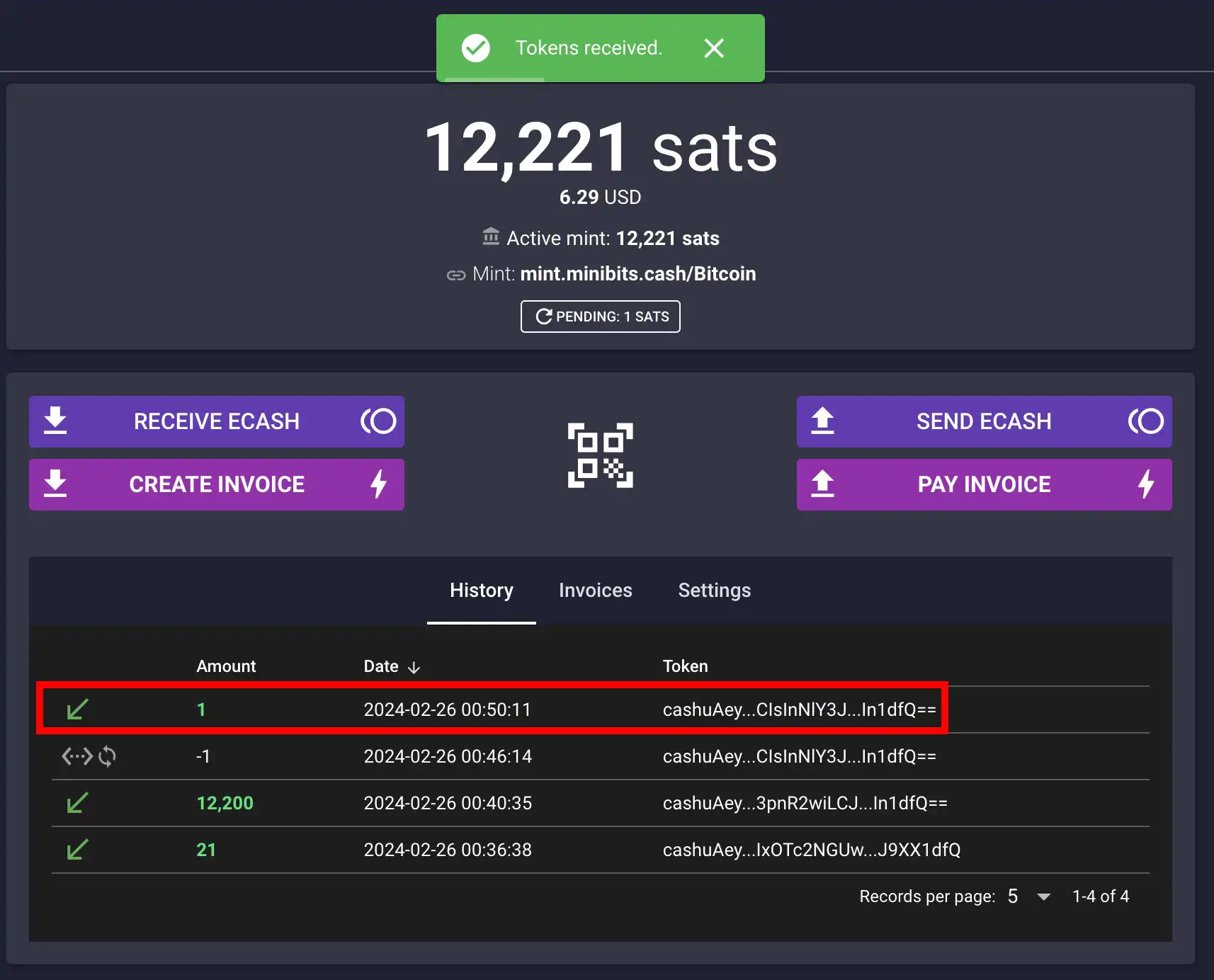
In this scenario, I sent and received the ecash token myself, and it's visible in the wallet history.

Whenever you want, if you decide to transfer all the sats/ecash back to your lightning wallet, you can utilize the "Redeem" function. This option, accessible from the sandwich menu on the left, allows you to "sweep" or "melt" all the funds from the mint back to your wallet. Simply click on "Redeem" to initiate the process.
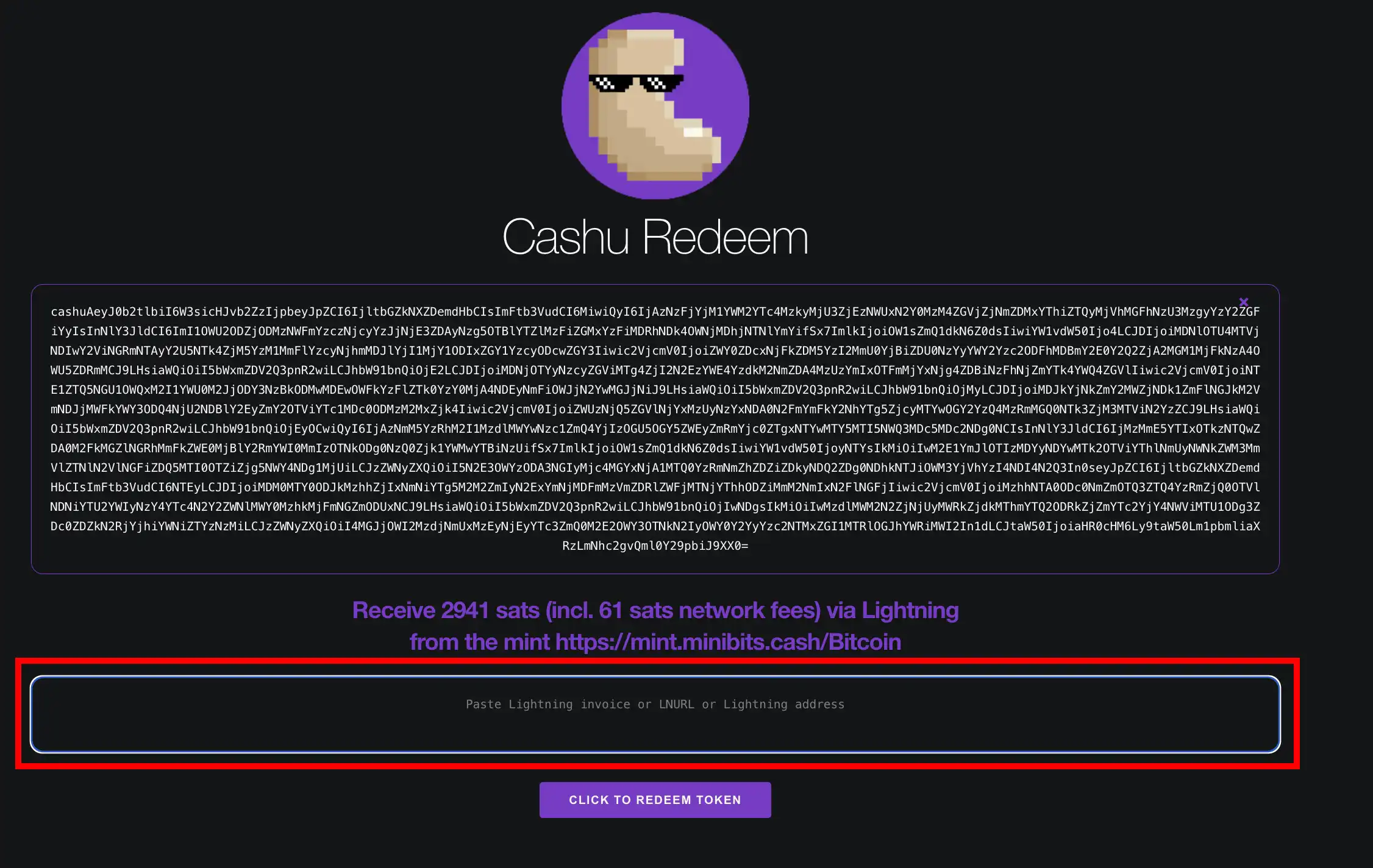
You'll receive instructions on how to create the invoice from your Lightning Wallet. In this instance, you'll need to generate an invoice for 2941 sats (with 61 sats allocated for Lightning Fees by Cashu).
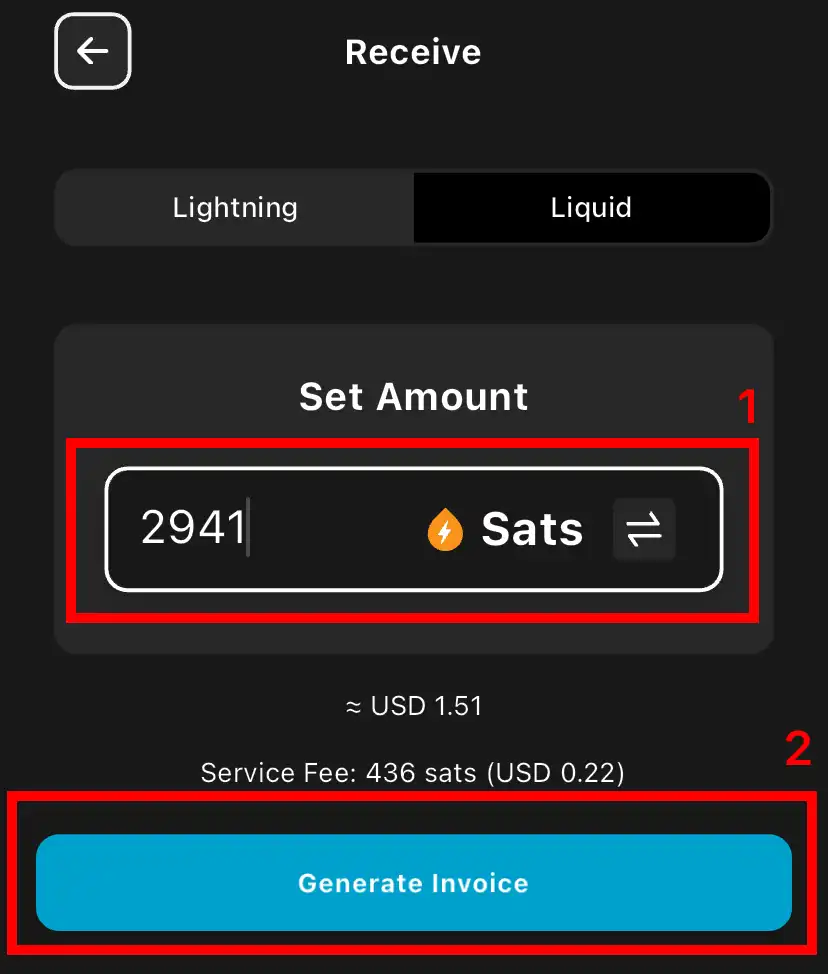
Returning to my Lightning Wallet, specifically AQUA Wallet in this instance, I create an invoice for 2941 sats and proceed by selecting "Generate Invoice".
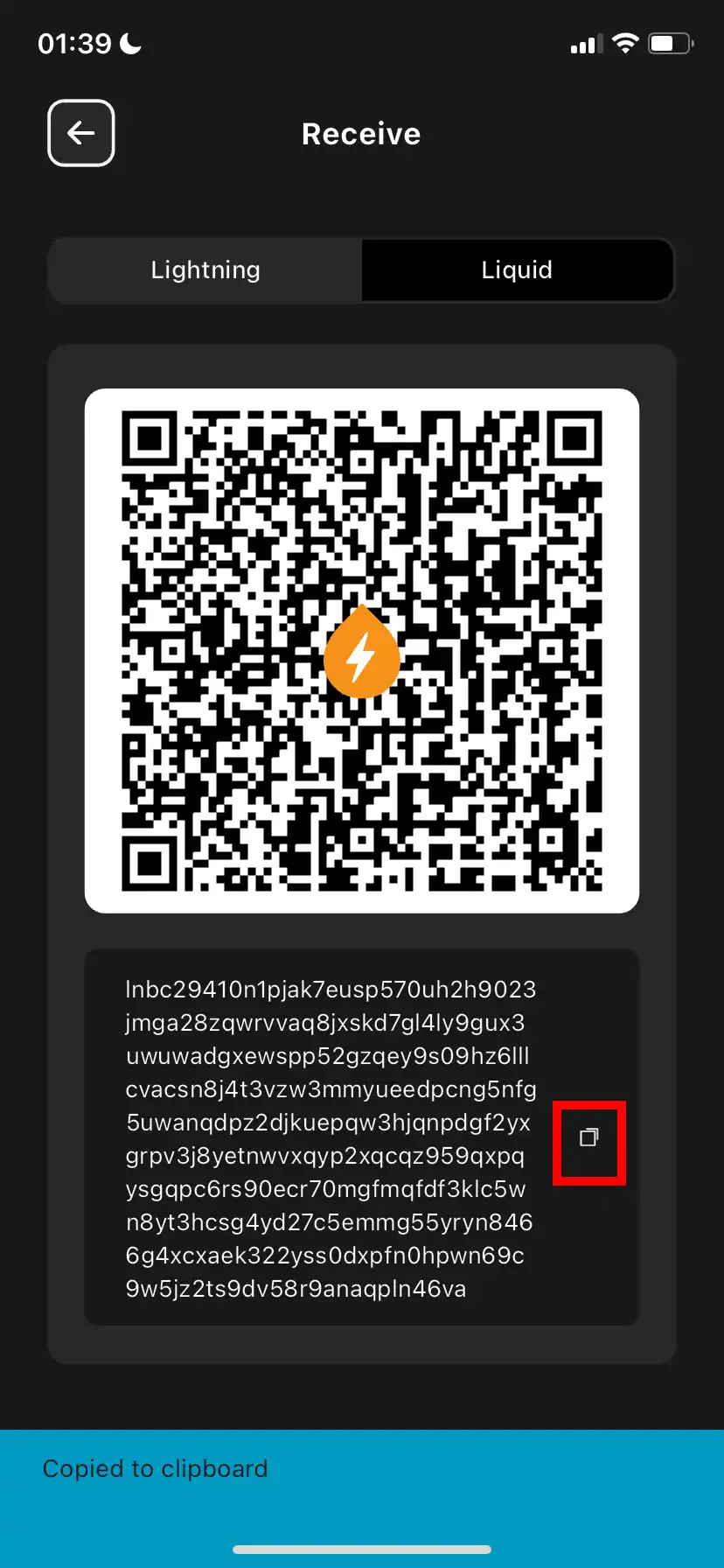
I copy the invoice address that I just generated in my Lightning wallet to the clipboard.
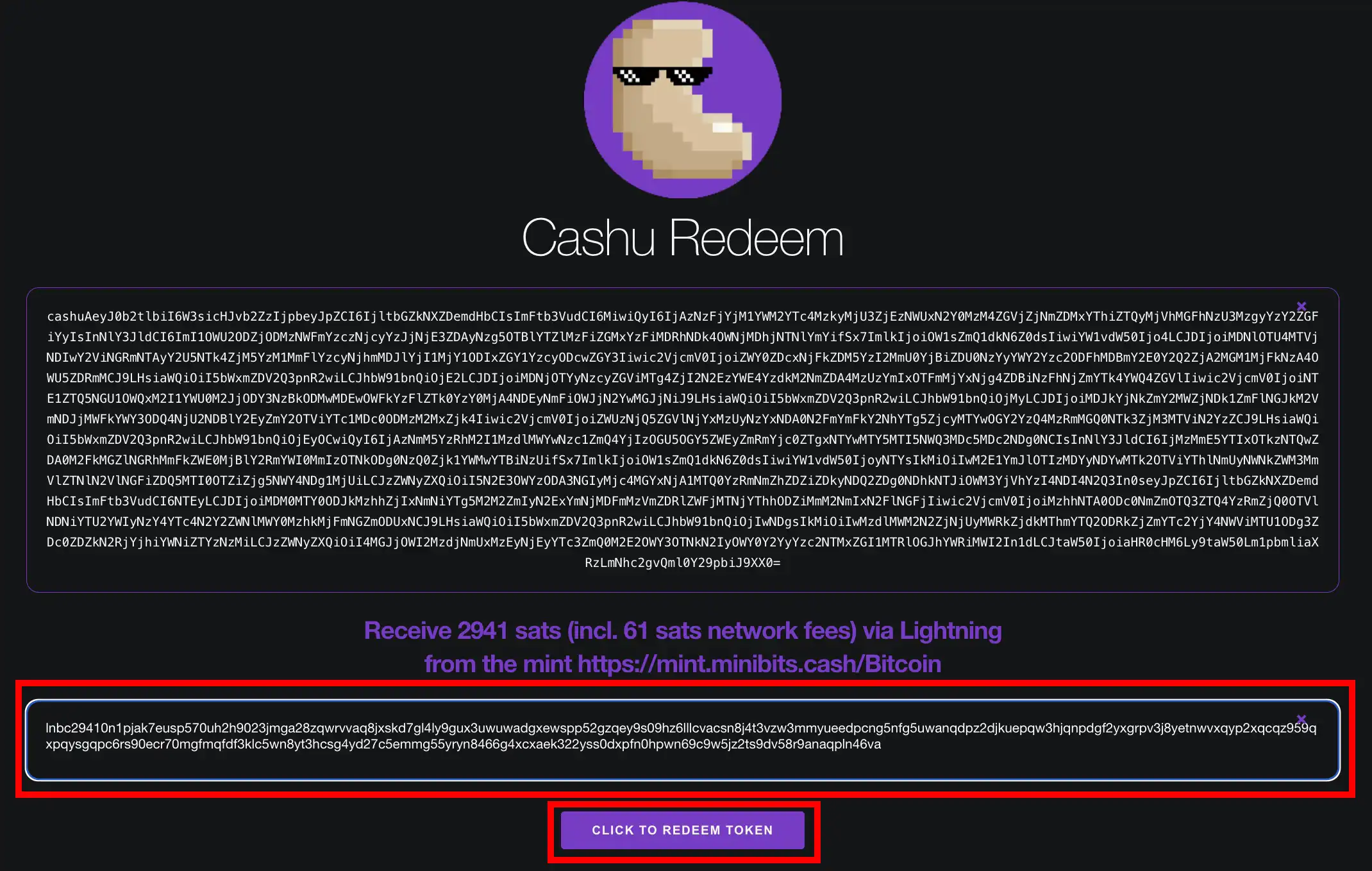
I paste the invoice address into the text field of the Cashu redeem and then click on "Click to Redeem Token" to confirm.

The cashu redeem page should show "Payment successful!".

And your lightning wallet should show the same.
This was just a glimpse of what you can achieve with Cashu mint and wallet. The possibilities are vast. For instance, you can establish wallets or self-hosted mints for your company, family, and more, enabling private payments with ecash tokens while seamlessly interoperating with Lightning wallets.
The Origins of Cashu: eCash
Cashu, a protocol designed for Bitcoin, draws inspiration from the groundbreaking work of David Chaum, a pioneer in the field of cryptography. Chaum, often regarded as the father of modern cryptography, made significant contributions to digital currency with his invention of e-cash. Even before the emergence of Bitcoin and its developers, Chaum was exploring concepts that are now fundamental to the cryptocurrency space.
In the early 1990s, Chaum and his team developed Digital Cash (Digicash), a revolutionary anonymous digital currency system. Chaum's visionary insights into cyberspace, privacy, and the pitfalls of centralized control foreshadowed many concepts later embraced by Bitcoin advocates. He articulated concerns about the panopticon nightmare of online surveillance and emphasized the need for privacy-preserving technologies.
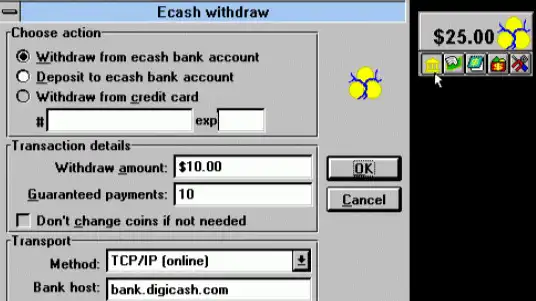
Central to Chaum's e-cash system were blind signatures, a cryptographic technique he introduced in 1982. The Cypherpunks movement, including luminaries like Satoshi Nakamoto, recognized the significance of Chaum's work and its alignment with their own ideals of private communication and decentralized currencies.
However, Digicash's centralized control proved to be its Achilles' heel. Despite partnerships with institutions like the Mark Twain Bank and Deutsche Bank, Digicash faltered and ultimately folded in 1998. Cryptographer Adam Back later reflected on the lessons learned from Digicash, emphasizing the necessity for decentralized, peer-to-peer systems in contrast to centralized, trust-dependent models.

Nick Szabo, a prominent figure associated with Digicash, later explored decentralized currency concepts with Bit Gold, a precursor to Bitcoin. While Bit Gold influenced Satoshi Nakamoto's work, Bitcoin introduced significant improvements, notably the elimination of reliance on trusted third parties through its innovative proof-of-work consensus mechanism.
Cashu emerges as a response to the shortcomings of centralized e-cash systems like Digicash. With a focus on decentralization and privacy, Cashu strives to create a trust-minimized alternative to traditional financial systems. Operating within the Lightning Network, Cashu enables the issuance and transacting of e-cash tokens backed by Bitcoin reserves.
Crucially, Cashu empowers users with autonomy over their tokens, eliminating the need for accounts or personal information. Mints, acting as decentralized banks, issue e-cash tokens, while users retain the freedom to choose their preferred mint and redeem tokens for Bitcoin at any time. This decentralized approach, coupled with its privacy-enhancing features, positions Cashu as a promising solution for secure and private digital transactions.
What Cashu Solves?
Cashu addresses a significant challenge faced by users of custodial Lightning apps, such as Wallet of Satoshi. While these apps offer convenience, users must relinquish custody of their funds, leading to privacy concerns and a lack of control over their transactions.
With the integration of Chaumian e-cash, Cashu transforms the landscape by introducing near-perfect privacy and eliminating transaction fees within these custodial apps. Users can transact anonymously within the Lightning network, enjoying instantaneous settlements without compromising their privacy or revealing transaction details to third parties.
By implementing Cashu, custodial Lightning apps like Wallet of Satoshi could offer their users enhanced privacy, lower fees, and seamless interoperability with other Lightning and Cashu-enabled platforms. This would empower users to enjoy the benefits of Lightning transactions while maintaining their privacy and control over their funds.
While Cashu does require users to entrust custody of their funds to the app operator, the trade-off in privacy and convenience can be acceptable for certain use cases. However, users should exercise caution and limit the amount of funds they entrust to custodial apps to mitigate potential risks.
Furthermore, Cashu also provides the option for users to run their own Cashu mint, offering a decentralized alternative for those who prioritize full control over their funds and transactions.
Another benefit of Cashu protocols is the ability to transact offline, including via radio. An intriguing project by Juraj Bednár, integrates Reticulum, Cashu and Nutband for using a Cashu mint over a mesh network, operating without the internet.
Overall, Cashu represents a significant step forward in enhancing privacy, resiliency and usability within the Lightning Network ecosystem.
Cashu Wallets
Cashu wallets offer a diverse range of options to cater to various user preferences and needs:
- Nutshell: A command-line interface (CLI) wallet available through PyPi, Nutshell serves as both a wallet and mint. It boasts full Bitcoin Lightning integration, support for multiple mints, and advanced features like complex spending conditions tokens.
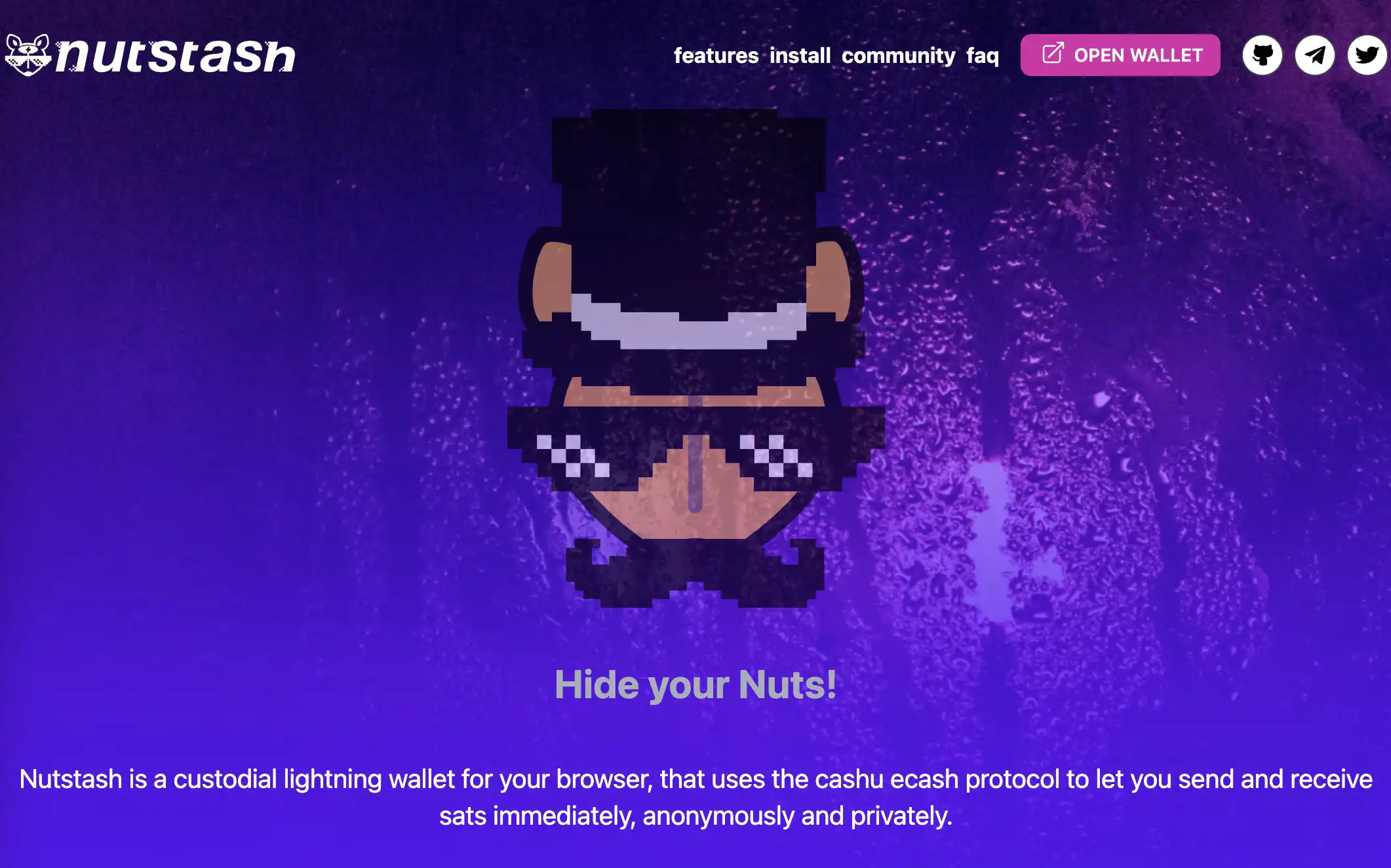
- Nutstash: A web wallet written in TypeScript, Nutstash supports multiple mints and facilitates token transactions via nostr.

- eNuts: Designed for Android and iOS platforms, eNuts provides users with an intuitive interface for seamless Ecash transactions.
- Minibits: A mobile wallet focused on performance and usability, Minibits ensures a smooth user experience for Cashu transactions on the go.
- Cashu Feni: Written in Golang, Cashu Feni supports multiple mints, P2SH, and offers Docker images for easy deployment.
- Cashcrab: Featuring a Flutter UI and logic implemented in Rust, Cashcrab offers a user-friendly interface and integrates nostr for contacts and messaging.
- Moksha: A Rust-based Cashu wallet and mint, Moksha provides robust functionality and security for users.
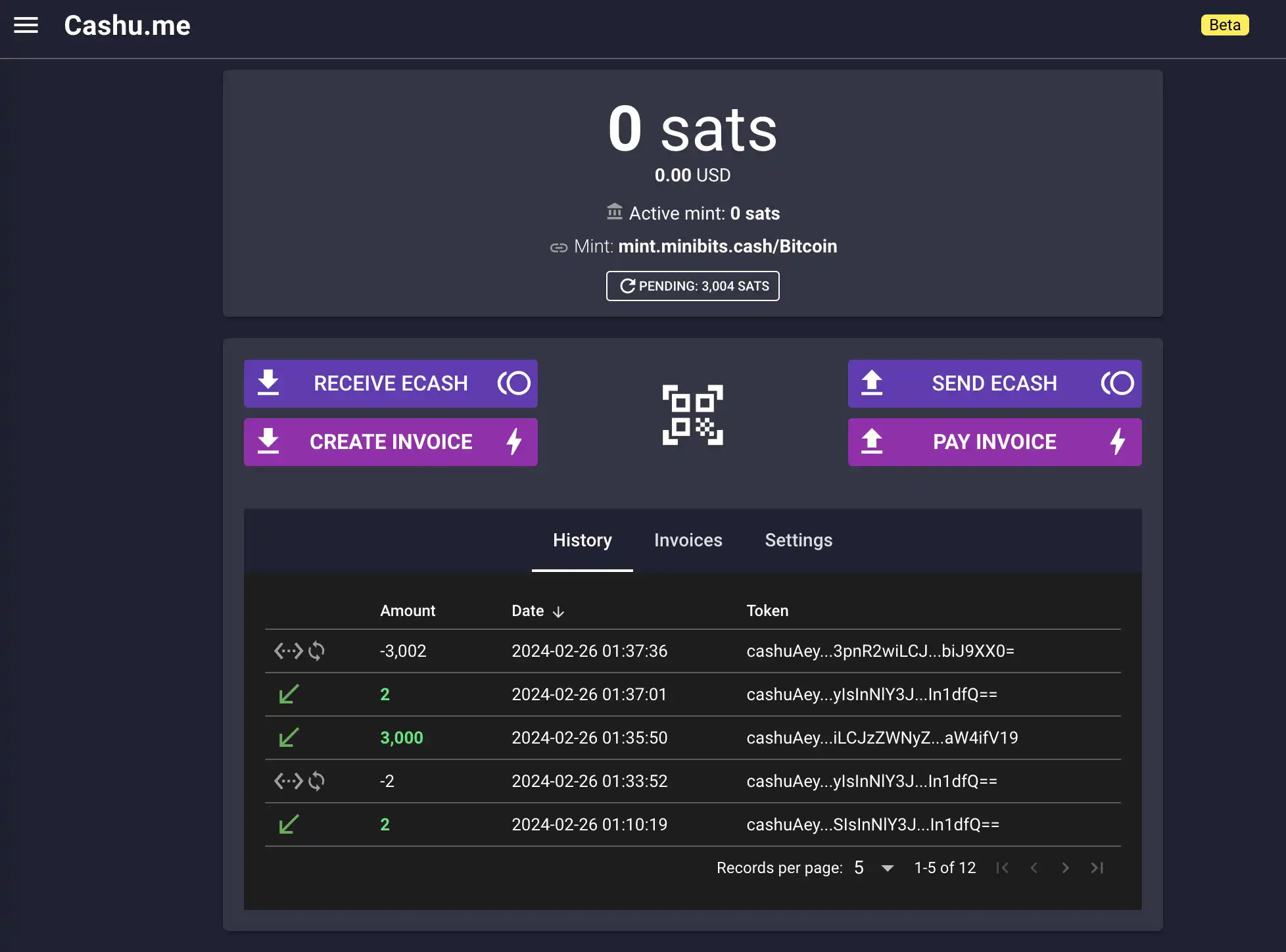
- Cashu.me: Built on Quasar and Vue.js, Cashu.me is a web wallet under active development, offering a user-friendly interface for Ecash transactions.
- Macadamia: Designed for iOS devices and written in Swift, Macadamia ensures a seamless Cashu experience for Apple users.
- Gonuts: A Golang-based implementation of a Cashu wallet and mint, Gonuts provides users with a reliable and efficient platform for managing their Ecash transactions.
Cashu Alternatives
The alternatives to Cashu encompass various protocols that also uphold the Chaumian E-cash protocol. While there are currently few alternatives available, one gaining notable traction is the Fedimint protocol.
Fedimint emerges as a decentralized Chaumian E-cash protocol, offering an alternative to Cashu's slightly more centralized model. Through a federated system called "Guardians," Fedimint ensures the security of user funds.
Fedi, an application built on the Fedimint protocol, exemplifies its practical implementation, underscoring Fedimint's role as a compelling alternative solution in the cryptocurrency landscape.

Cashu Pros & Cons
| Pros | Cons |
|---|---|
| ✅ Privacy-focused | ❌ Custodial |
| ✅ Lightning Network integration | ❌ Limited adoption |
| ✅ Decentralized alternative | ❌ Learning curve |
| ✅ Multiple wallet options | |
| ✅ Compatibility |
Bottom Line
In conclusion, Cashu stands as a pioneering solution at the intersection of blockchain technology and digital finance, offering users unparalleled privacy, speed, and control over their transactions. With its integration of Lightning Network and Chaumian E-cash principles, Cashu enables lightning-fast payments while maintaining near-perfect anonymity, akin to cash transactions in the physical world.
Despite its custodial nature, Cashu provides users with a decentralized alternative to traditional financial systems, fostering trust and autonomy in the digital realm. As the landscape of digital currencies continues to evolve, Cashu remains at the forefront, embodying the principles of privacy, security, and decentralization.


